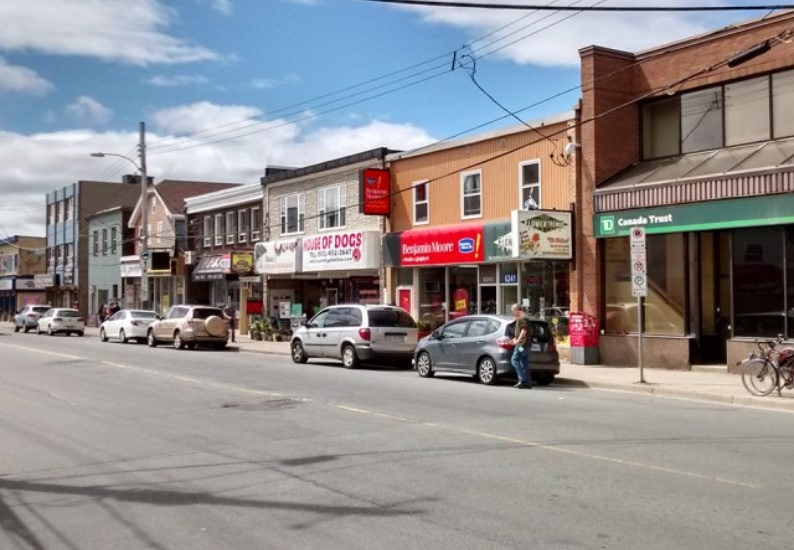
KJIPUKTUK (Halifax) – News yesterday that anyone gathering in a group of five or more could face fines up to $1000 per day was greeted positively by many who are understandably concerned about the spread of COVID-19 and the actions of others.
This measure was introduced after Stephen McNeil expressed his concern at people gathering in large numbers in beaches and parks, perhaps following pictures shared on social media of cars parked by the road near Crystal Crescent beach.
To be fair, these people were only doing what they had been advised to do by Mayor Mike Savage just the day before – to take advantage of our bounty of wide open spaces, beaches and trails. Was it really surprising they ended up in the same well-known spots?
Despite empty streets in Halifax, many will still need to venture out on foot or wheelchairs for essential journeys including food shopping. Social distancing requirements are an added issue for them to consider on our already cramped and narrow sidewalks.
“Keeping six feet apart” on roads like Quinpool, as reported yesterday by Councillor Shawn Cleary, isn’t so easy. The space afforded to pedestrians on this road and many others is very minimal, due to the significant spatial priority afforded on all our roads to the flow of vehicular traffic, and parking.
In addition to the prospect of police interactions, pedestrians face an ongoing threat of harm. Over the weekend, a local man in Fairview appealed for witnesses on social media after his 70 year old sister-in-law was hit by a motorist at Dunbrack and Main who did not stop. This follows a recent incident on a crosswalk nearby on Dunbrack – the 74 year-old lady was the eighth pedestrian over 55 years old killed on our roads since January 2018.
It is clear that these new fines could be directed at people out walking – they were announced in direct response to people going for walks on our beaches and trails.
However pedestrians and people walking do not intend to gather in an irresponsible way with the intention of putting themselves and others at risk. They are out for exercise, to get shopping, to visit vulnerable loved ones trapped in their homes and deliver food from a safe distance, or to get to and from work in a way that avoids higher-risk choices such as the bus.
Governments have advised that close proximity in closed spaces present the greatest risk – for example visiting a store or attending a workplace. The questionable logic of closing trails while leaving shopping malls open for business was queried yesterday by local businesswoman Sarah Riley.
Social distancing will clearly be necessary for some time. But if we want to avoid pedestrians being the focus of people’s anger and police enforcement efforts, our governance will need to make it clear that they are not the target nor the problem, and that they are being responsible.
Pedestrians will generally only be in close proximity where sidewalks do not allow ample passing distance. As a recent campaign by the UK national health authority has highlighted, the greatest risk to the spread of infection is likely from walk request buttons.
People in Halifax and Nova Scotian communities will need more space and new measures to be able to walk safely and responsibly. A change to our spatial priorities will help bring home the message that everyone should keep a safe two-metre distance from others, without the need for large fines that few can afford to pay.
On roads like Quinpool, this means closing at least one traffic lane so that people have room to walk and cycle safely. There are other inexpensive measures that can be taken to ensure our most vulnerable (often senior) pedestrians are safer using our wide and dangerous crosswalks, for example adjusting traffic light timings to stop traffic while pedestrians cross.
These new laws should never be enforced in a way that punishes those who have no choice but move in close quarters with others, for example on narrow sidewalks and in shops.
Such a draconian approach would unfairly affect the poorest members of our community. This could be entirely avoided by reconsidering our urban spaces, and giving people who walk, wheel and cycle more space, safety and priority on our roads.
If you support this proposal, please send a copy of this article to your local councillor and MLA, asking them to implement measures to ensure those on responsible and necessary journeys are given safety, additional space, and are not the target of fines.
If you walk, cycle or use a wheelchair and are affected by road safety issues, please join HRM Safe Streets for Everyone. If your local crosswalk needs a crosswalk flag, please contact the Crosswalk Safety Society. Please remember to report issues affecting your safety to our municipal authorities using the 311 service.
With a special thanks to our generous donors who make publication of the Nova Scotia Advocate possible.



